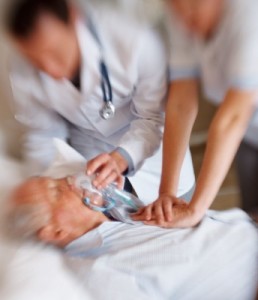 He said WHAT? Someone, who will remain un-named, stated that people without health insurance should not worry because “they can always go to the Emergency Department.” Wait a minute. PUMP YOUR BRAKES!!!! Administrators, health policy officials and doctors all agree that this is not the direction we want to move healthcare. Emergency Care is not health insurance. It is care that is designed for EMERGENCIES – urgent and emergent life threatening conditions.
He said WHAT? Someone, who will remain un-named, stated that people without health insurance should not worry because “they can always go to the Emergency Department.” Wait a minute. PUMP YOUR BRAKES!!!! Administrators, health policy officials and doctors all agree that this is not the direction we want to move healthcare. Emergency Care is not health insurance. It is care that is designed for EMERGENCIES – urgent and emergent life threatening conditions.
A Brief History of Emergency Medicine
Emergency Medicine started to evolve as a specialty in the 1970s. It is the youngest medical specialty whose development is directly connected to the surge and development of organized hospitals. Before Emergency Medicine became an established specialty, covering Emergency Departments was the responsibility of the doctors on staff at the hospital (internists, surgeons, pediatricians, etc.) The specialty of Emergency Medicine was formed in order to increase the quality of care provided to patients experiencing emergencies and to have doctors who would be fully committed to the 24-hour-a-day-7-day-a-week coverage required in chaotic emergency departments.
Gold Standard
Nowadays, a medical student who wants to practice Emergency Medicine must do so by completing medical school and applying for an Emergency Medicine Residency – one of the most competitive specialties in the country. After completion of an accredited residency program, formally trained doctors must go through vigorous written and oral examinations in order to become board certified. Board certified Emergency Physicians represent the “gold standard” in training for emergency care – that “anything, anytime” urgent and emergent care you hope you never need.
Pump Your Brakes!
So how did that transform into Emergency Physicians being the doctors providing primary care? PUMP YOUR BRAKES!!!! It didn’t. Emergency Departments were never meant to replace primary care physicians and this is not what happens in most instances. What commonly happens is this: patients have medical conditions that go un-prevented, un-attended, un-treated, and un-managed and this results in conditions that require urgent/emergent intervention. I’m sure you can cite examples of people to go to EDs for non-urgent reasons but this happens less than 8% of the time. That means most of the people coming to Emergency Departments need to be there and there is plenty of high quality data that says this is true. People need access to primary care doctors – as well as high quality emergency care and medical specialist when necessary. A health system that provides and guarantees this type of access for all citizens is optimal.
911 Emergency – Healthcare Crisis in America
We are in the throes of a healthcare crisis in America but are the negatively labeled “expensive and costly” Emergency departments to blame for this? Heck no! Most primary care offices are open 40-60 hours a week compared to 24 hours a day – EVERY day of the year that EDs are open. Two thirds of ED visits occur during non-business hours. Primary care doctors get to choose who their patients will be. Emergency physicians don’t. We are the essential public servants of medicine. Being the doctors who are federally mandated to provide medical care to whoever comes – you can see how tempting it could become for patients to simply just go there when there is a problem. Especially when their primary care doctor is not available or people don’t have access to a doctor to begin with.
Healthcare Safety Net
The bottom line is this… Emergency Departments provide a healthcare safety net for EVERYONE, not just the uninsured. The safety net is being severely strained from lack of access to primary care. There are either no primary care physicians available, they are not taking new patients, or they are not taking certain insurance plans (can you say MEDICAID?) because of extremely low reimbursement rates.
Two Cents
Furthermore, emergency department care represents less than 2% of the nation’s health care dollar. That is a tremendous load to bear for 2 cents out of every dollar. Decreasing reimbursements for ED care and increasing levels of uncompensated care have resulted in the closure of hundreds of Emergency Departments across the country. This limits everyone’s access to lifesaving Emergency Care. It is much easier to appreciate this fine point when you can’t breathe, suddenly loose your vision, wind up in a car crash, or develop crushing chest pain – just to name a few. Anyone at anytime is our mantra and also the actual reality. You are simply a matter of being a heartbeat away from an emergency.
We need more Primary Care
There was a time when primary care represented the only care that a patient required except in extreme and unusual circumstances. Now they tend toward being gate-keepers and referral centers for specialists. We need more primary care physicians who can care for the people of this great nation – while at the same time, people cultivate understanding that they are their own first step in primary care.
Be WELL!
Dr. Pamela Ross, MD
Image credit: logos / 123RF Stock Photo
